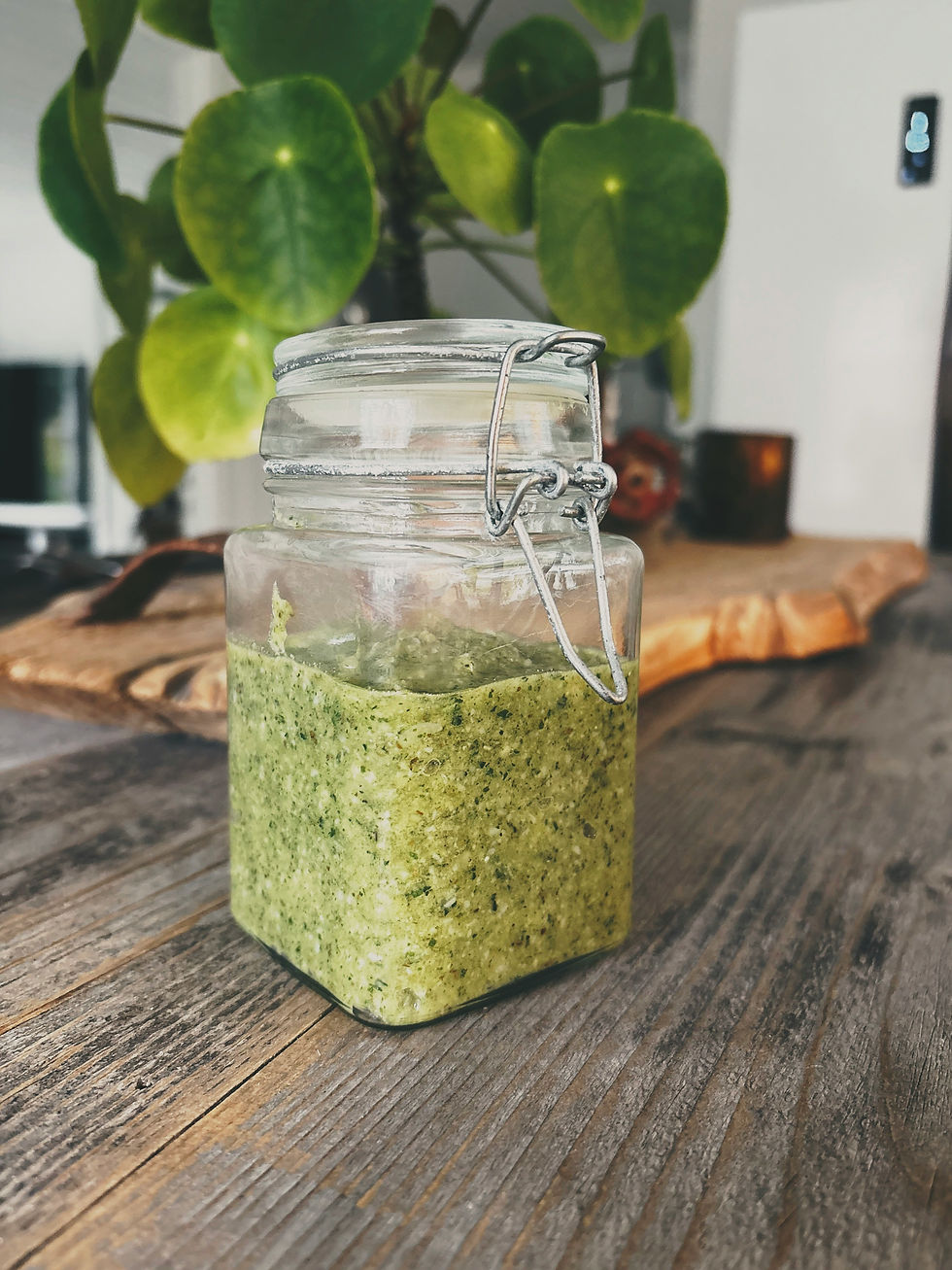Everything You Need to Know About Ligurian Pesto
- Katie Chung
- Jul 7
- 3 min read

You might recognize Pesto alla Genovese, the bright green sauce of Liguria, which has become an iconic part of Italian cuisine. As a part of tradition and making for a delicious meal, Ligurian pesto holds deep history that should be learned and celebrated.
What is the story behind Ligurian pesto?
The name “pesto” comes from the Italian verb pestare, which means “to crush” or “to pound.” This refers to the original method of preparation for pesto, which begins by grinding the ingredients by hand using a mortar and pestle.
In the 19th century, Genoa’s (Liguria’s capital) cuisine reflected its coastal climate. Basil, pine nuts, garlic, Parmigiano-Reggiano, Pecorino, sea salt, and olive oil became key ingredients for the pesto that would soon become revered all over the world.
The tiny-leaf basil from Genoa became an integral part of this recipe, along with local extra virgin olive oil. The best pesto is rarely cooked, made with fresh ingredients that beckon people from far and wide.
What makes Ligurian pesto unique?
Ligurian pesto is different from jarred pesto in its raw and aromatic nature. It is made to be eaten fresh, rather than stored long-term. Here are the ways in which each ingredient contributes to its unique taste:
Basil: Small and sweet, Ligurian basil tends to be tender and less spicy than the conventional basil you might think of.
Olive oil: Ligurian extra virgin olive oil is extra mild and light.
Cheese: The combination of Parmigiano-Reggiano and sheep’s milk Pecorino provides a nutty, sweet flavor.
Garlic: Sticking to fresh ingredients, raw garlic makes a difference in this recipe.
Pine nuts: Adding a texture and sweetness, traditional Ligurian pesto utilizes raw pine nuts.
Salt: Coarse sea salt seasons the sauce and breaks down the basil.
Pesto is made to have texture and cling to the pasta, which may differ from the silky-smooth sauce you’re expecting. Read on to find out how to make the real thing yourself!
How can I make Ligurian pesto the traditional way?
Ingredients for 1 cup of Ligurian pesto
2 handfuls of basil leaves (~50 grams)
2 tablespoons pine nuts
1-2 cloves peeled garlic
¼ cup grated Parmigiano-Reggiano
2 tablespoons grated Pecorino
Coarse sea salt
½ cup Ligurian-style olive oil
Recipe
In a marble mortar, pound garlic and some salt until creamy.
Add pine nuts and crush them into the mixture.
Add basil a few leaves at a time.
Mix in the cheeses.
Drizzle in olive oil while stirring until you achieve a spreadable and spoonable consistency.
While you can use a food processor for this process, the most authentic Ligurian pesto is handmade!
How do I serve and store Ligurian pesto?
Ligurian pesto is typically served with pasta that is designed to cling to the sauce and make for a deliciously textured meal. Commonly paired items in the sauce include potatoes and green beans.
Here are some tips for serving:
Don’t heat pesto directly on the stove—this will cause the basil to darken.
Dilute with pasta water to loosen the sauce.
Use immediately and eat fresh!
If storing, press a layer of olive oil on top and refrigerate for up to 2 days.
Other uses of Ligurian pesto:
Spread on sandwiches or bread!
Use as a dip for various seafoods and vegetables.
Ligurian pesto is not just a recipe—it’s a vibrant sauce made for those who truly appreciate history and cuisine. Enjoy every bite of tradition here: and the modern touches that come with it.




Comments